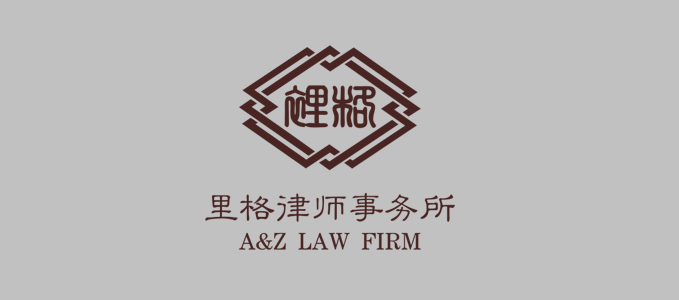Online IP Infringement: Dark Side Of Cross-Border E-Commerce
Online IP Infringement: Dark Side Of Cross-Border E-Commerce

As the Internet has reached a wide range of use, companies are starting to share experiences of falling victim to intellectual property (IP) infringements by online retailers. The most common types of intellectual property right (IPR) infringement include; misappropriating others’ work such as texts, images, and videos; selling products which have the same technical functions as other products without the right-holder’s permission; and even using the same or similar brand names and /or trademarks in account names and/or store names on online retail platforms. This article aims to explain how one may go about identifying such infringement acts.
There are three major means which can be employed in detecting infringing actions of online retailers. Firstly; investigating and monitoring online retail platforms, which is the practice most widely relied upon by the rights-holders, and is empirically the most effective, secondly; examining complaints and consumer feedback, lastly; resorting to online media (which is a less commonly used). As the Internet is rapidly developing, rights-holders need to rely on new methods in the discovery and handling of infringement acts of said retailers.
In order to understand the situation well, an example can be seen through the Japanese brand ‘Moussy’ on platform ‘Taobao’ (www.taobao.com).
The above photo shows a denim jacket with the model number 0109SB11-9060 produced by Moussy. On Moussy’s official Chinese website, this piece can be seen priced at RMB 1,598. However, the same product can be found on ‘Taobao’ at significantly lower prices, the lowest of which was around RMB 95. In addition, it is notable that at least 12 stores could be seen selling the same model of the jacket at unreasonably low prices; between RMB 95 and RMB 300.The jacket was labeled by retailers labeled in various ways:
- 日单Moussy外套原厂跟单贴布做旧风牛仔外套换标 (Japanese order: distressed-style Moussy denim jacket, made with same fabric from original factory, trademark changed);
- M家16秋装新款重磅复古水洗做旧字母牛仔外套0109SB11-9060 (Newmodel for Autumn 2016, distressed-style denim jacket from M-Factory, model number 0109SB11-9060);
- Mouss*y2016春款牛仔外套贴布BF风0109SB11-9060保真原单清仓特价 (Model for Spring 2016, cowboy-style denim jacket from Mouss*y, guaranteed authentic, original order, clearing sale);
- 原单尖货!MOU**Y后背玫瑰复古朋克牛仔衣外套 (Original order! MOU**Y vintage Punk-style denim jacket with rose pattern on the back).
In order to protect businesses and avoid serious risks, it is advisable that one understand how IP rights infringements can occur; know how to address the issues in the event it arises, and; employ a strategy in attempting to prevent its occurance. As evident from the previous example, in order to identify instances where IPR infringements could take place, it is suggested that the following six actions are undertaken, taking into account the examples suggested;
- Search your products using the brand name and keywords and sort the products by price or sale quantity. In instances where enormous variations of price, up or down, and an excessively large sale quantity is evident, a significant possibility exists that the product is counterfeit. Even where the price indicated on the website is within an ordinary price range; if the price indicated on the pictures is excessively low, there too exists the possibility that the product is counterfeit.
- Search your products using nicknames. Counterfeit suppliers will diversify the ways in which products are listed in order to avoid detection. With this aim, they will modify the name of a brand or good. For instance; characters with the same or similar pronunciations may be used, punctuation marks may be added between characters or keywords (particularly “*”), or the use of other characters which are not often used. Additionally, one can look for hidden signals in the name of the goods which allude to the legitimacy of the product, such as “original order”, “original D”, “following order”, “no trademark” or “trademark changed”.
- Another tactic is to search for products using the brand picture from the product’s official website. Online retail platforms such as Taobao, JD, and Yihaodian all employ picture searching functions. The picture searching function enables a search on not only the exact picture, but similar pictures as well.
- Search for products using product model numbers. Lack of creativity or inability to find an alternative way to describe the product forces numerous sellers to write down the same model number as the original with the aim of attracting more customers to their online shops.
- The information provided by the seller may be used to track the source of the product. If one would wish to obtain information on a product’s price, regardless of whether the product is obtained through a third party with proper receipts, the right-holder, i.e. a company and its employees, can also pay attention to the detailed description on the products, and even go so far as to initiate an online conversation with the seller in the interest of clarification.
- The product evaluation may also be used in the interest of obtaining information. Careful attention should be devoted to remarks describing products as “mediocre” or “bad” in evaluation of the product as this may suggest that the product sold is counterfeit. It should also be borne in mind that numerous “good” evaluations do not imply the genuine nature of the product. Evaluations might be intentionally created in order to give the image of credibility in the interest of attracting customers. In this case, there are reasonable grounds for suspecting that the product is counterfeit.
IP rights can be complicated and are still largely unfamiliar to many. A product protected by numerous different IP rights can be subject to infringement in different ways at the same time. Online IP rights infringements threaten legitimate businesses and undermine consumer confidence. Hence, failure to address these types of risks could lead to a business’s downfall in the Chinese market.



